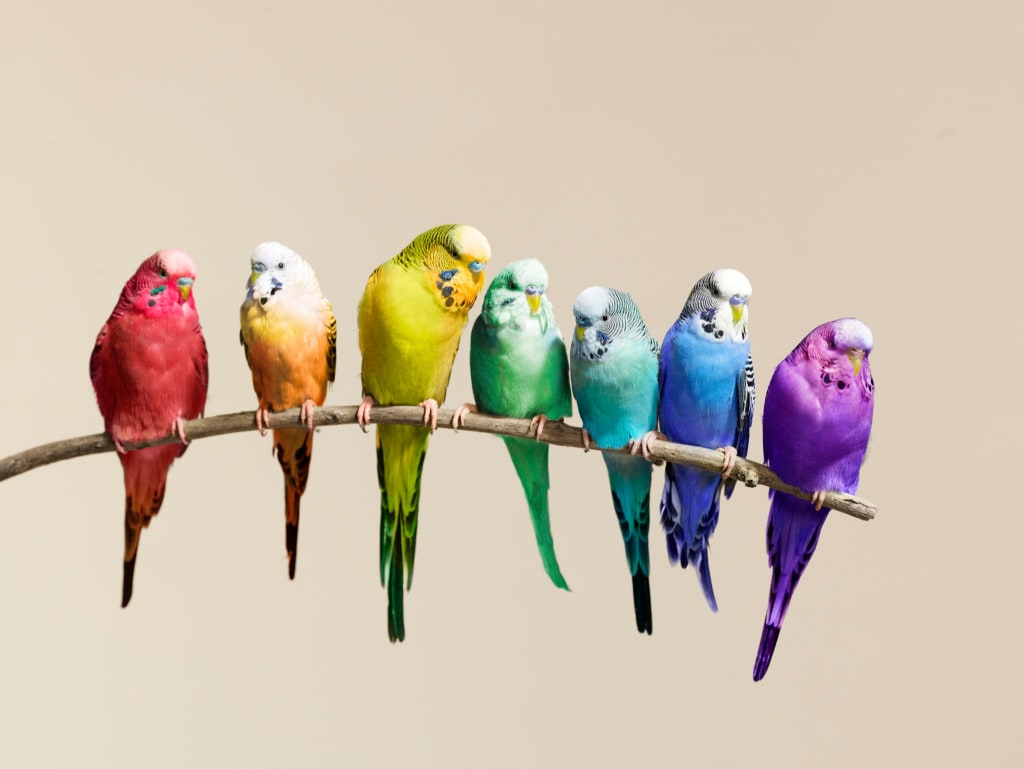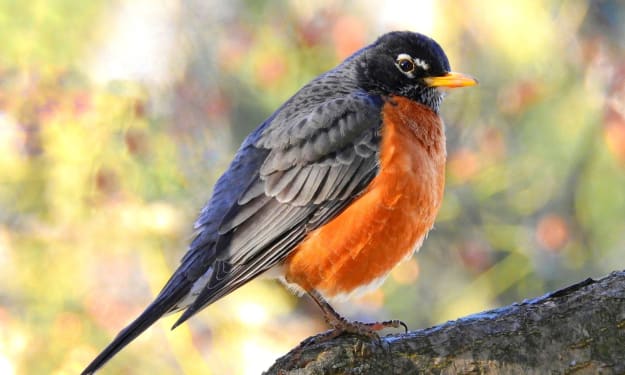
The Budgerigar, also known as the common parakeet or budgie, is a small species of parrot that is native to the grasslands of Australia. It is one of the most popular pet birds in the world, prized for its small size, bright colors, and friendly disposition.
Physical Appearance:
Budgerigars are small birds, typically measuring between 7 and 8 inches in length. They have a streamlined body shape and a relatively long tail that helps them maneuver through the air. Budgerigars have a distinct coloration that varies depending on the individual bird's sex, age, and genetic makeup.
Male Budgerigars have a bright blue cere, which is the fleshy area above their beaks, and their heads and necks are covered in a blue-violet feathering. The wings and back of male Budgerigars are a vibrant green color, and their tails are long and tapered.
Female Budgerigars have a brownish-pink cere and a yellow-green coloration on their head and neck. The wings and back of female Budgerigars are a muted green color, and their tails are shorter and more square-shaped than males.
Behavior:
Budgerigars are social birds that thrive in flocks. In the wild, they live in large groups that can number in the hundreds, and they are known for their playful and curious nature. Budgerigars are also highly intelligent and can learn to perform a wide range of tricks and behaviors.
One of the most endearing traits of Budgerigars is their ability to mimic human speech. While not all Budgerigars will learn to talk, many can learn to mimic words and phrases with surprising accuracy. In addition to mimicking human speech, Budgerigars are also talented singers, and their chirps and trills are a common sound in many households.
Habitat and Distribution:
Budgerigars are native to Australia, where they can be found across much of the continent. They are most commonly found in the grasslands and savannas of the central and western parts of the country, where they feed on seeds, grasses, and other vegetation.
In their natural habitat, Budgerigars are social birds that live in large flocks. They spend much of their time foraging for food and water and engaging in social behaviors such as grooming and preening.
Conservation Status:
Budgerigars are not considered a threatened species, and their wild populations are stable. However, they are sometimes trapped and exported for the pet trade, which can have a negative impact on local populations.
In addition to being popular as pets, Budgerigars are also valued by scientists for their ability to learn and solve problems. They have been the subject of numerous studies on cognition, communication, and social behavior, and they are considered an important model organism for understanding the neural basis of learning and memory.
Breeding and Reproduction:
Budgerigars are sexually dimorphic, which means that males and females have different physical characteristics. They are also monogamous and mate for life, which means that once they pair off, they will remain with their partner for the rest of their lives.
In the wild, Budgerigars breed during the rainy season, which typically occurs between December and March. During this time, pairs will build nests in tree hollows or other protected areas, and the female will lay a clutch of 4-6 eggs.
The eggs will hatch after about 18 days, and the chicks will fledge (leave the nest) after about 4 weeks. After fledging, the young Budgerigars will stay with their parents for several more weeks, learning important social and survival skills before striking out on their own
Native to Australia, Budgerigars are stunning nomadic parrots, marked with green and yellow coloration on their chests and back. Black feather patterns also decorate their backs. Males have blue coloring around their beaks while females have pink or purple coloring in that area.






Comments
There are no comments for this story
Be the first to respond and start the conversation.